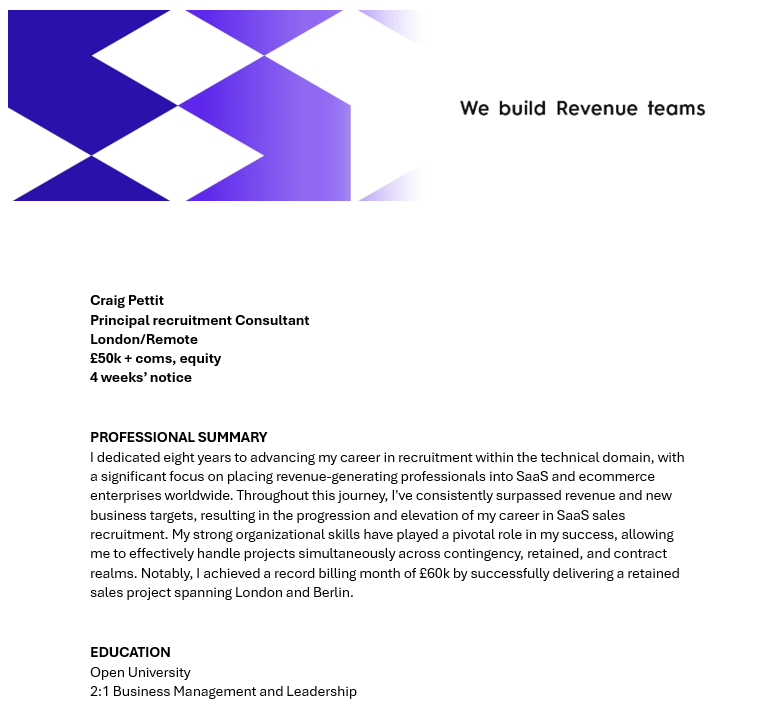LinkedIn & CV
Your CV will serve one purpose, it is a snappshot of your career history, experience and skillsets and you will utulise this resource when actively searching for a new position. On the other hand, your LinkedIn profile will serve three purposes; it will serve as your CV when looking for a new job, it will serve as a shop window for recruiters looking to headhunt you and it will serve as a shop window for your prospects or clients to study. It's important to find the right balance.
Resumé/CV
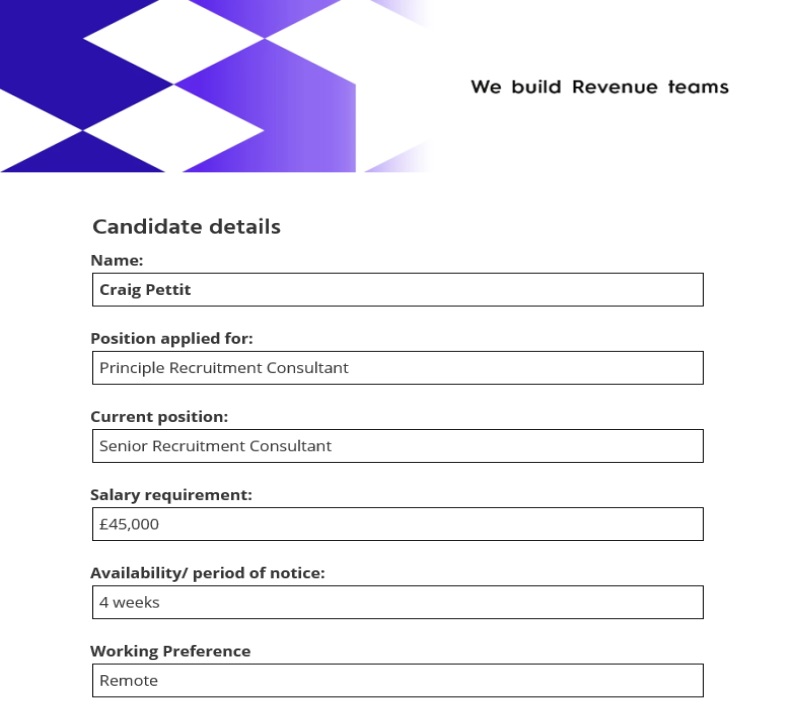
Your CV/Resumé and your LinkedIn employment history is specifically for hiring managers and recruiters, whilst prospects might look at your LinkedIn working history to see if you're experienced enough to work on their solution, they will be reading this in the same way as a hiring manager.
The most common mistake I see as a recruiter is people writing too much, or ONLY about the company they work for. But this section really is about you and your role. Any one can google your employer and see what they do.
In the next section we will start putting together the perfect CV from a hiring managers perspective and increase your application to interview ratios.
LinkedIn Profile
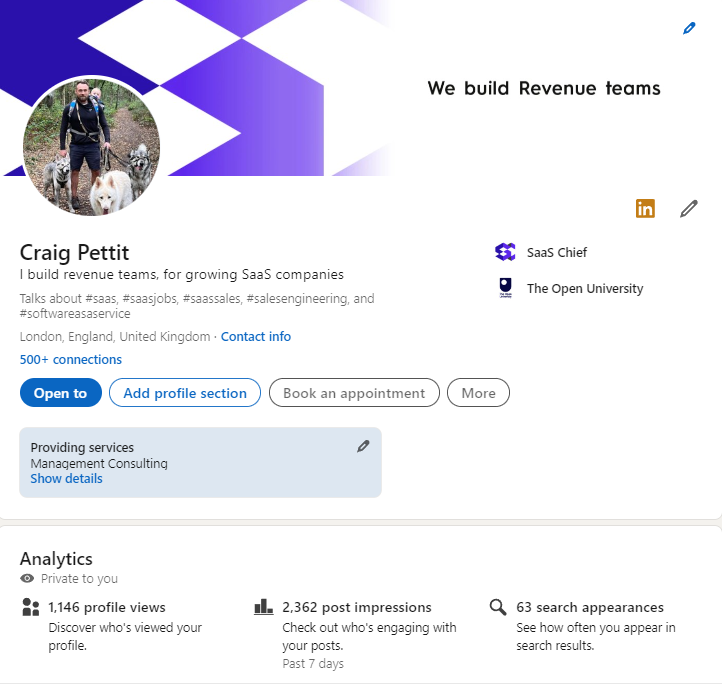
Your LinkedIn profile is arguably the most important item, it will be seen by lots more people on a daily basis that your CV. You will need to consider how this looks from a recruiter/hiring manager perspective, but also for your target market, your prospects and clients.
The employment section of your LinkedIn profile should cover the same as your CV, however the summary and headlines of your profile should relative to your situation. For example, if you're unemployed and actively looking for a new position, this should focus more on targeting hiring managers and recruiters, if you're not actively looking for work, this should focus on your target prospects or clients.
Crafting the perfect CV
Personal Details
Let’s not overkill this with details that can allow a criminal to steal your identity.
You should consider some key facts of a Job specification that you would expect to see when applying for a role.
Your name | Your position | Location | Right to Work | Preferred working situation (remote, onsite, hybrid) and your target salary.
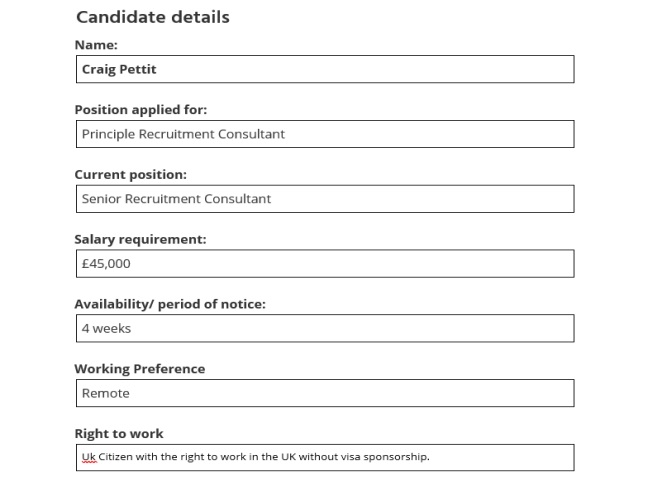
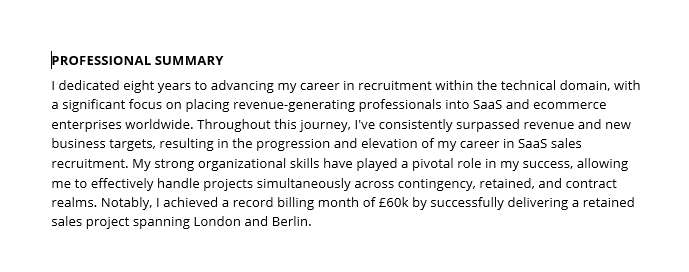
Professional Summary
Situated right underneath your name, the section is the most read part of your profile. It should identify and discuss your skillset, industry and technical knowledge in a nutshell.
It’s really easy to fall into a trap of writing something you see on every single CV and therefore you should avoid things like:
” I’m a highly personably sales professional working in technology. I am extremely ambitious and a great team player”
The truth is, the hiring manager or recruiter will make their own opinion on your personal attributes, so these don’t really matter on your CV.
Employment History
The employment history section is a section that should be constructed carefully. Whether we like it or not, hiring managers have unconscious biases, they do not read the full profile and they tend to look for two things:
(1) What they want to see
– Technology used
– Targets and achievements
– Markets, deal sizes, and sales cycles
– Challenges you’ve overcome
– Processes you work to
– Team size and structure
– The impact you had
(2) What they don’t want to see
– Loads of information about the company – They can google this
– Jumpy working history, sometimes staying put an extra year can benefit your career massively.
– Responsibilities, if you’re an SDR, and they’re recruiting for an SDR, it’s probably safe to say they know the responsibilities of an SDR.
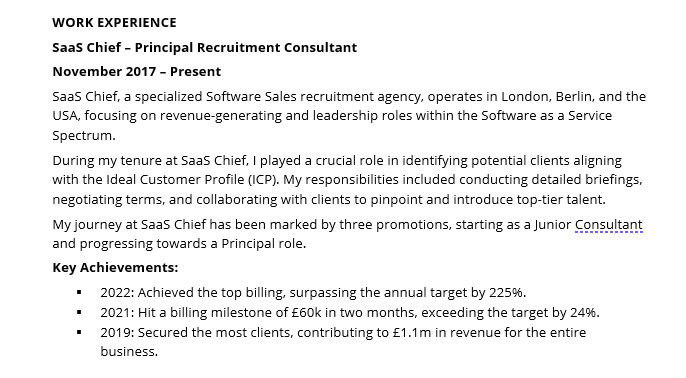
Putting it all together
Let’s recap and begin to put it all together and start applying for your next position.
Structure and Design
Stick to a basic CV format; elaborate designs and tables won’t make you stand out, but they can confuse readers. Remember, many CVs are processed by software, so a clear and standard structure improves your chances of being noticed post-application.
The Do’s
Highlight your professional experience, showcase achievements, emphasize team/business impact, and touch on key elements relevant to your next role, like Market, Prospects, Deal size, Cycle, and processes/tools.
The Do Not’s
Emphasize your skills and experience; avoid lengthy details about the company and responsibilities, as hiring managers can quickly research and likely already understand your role.
